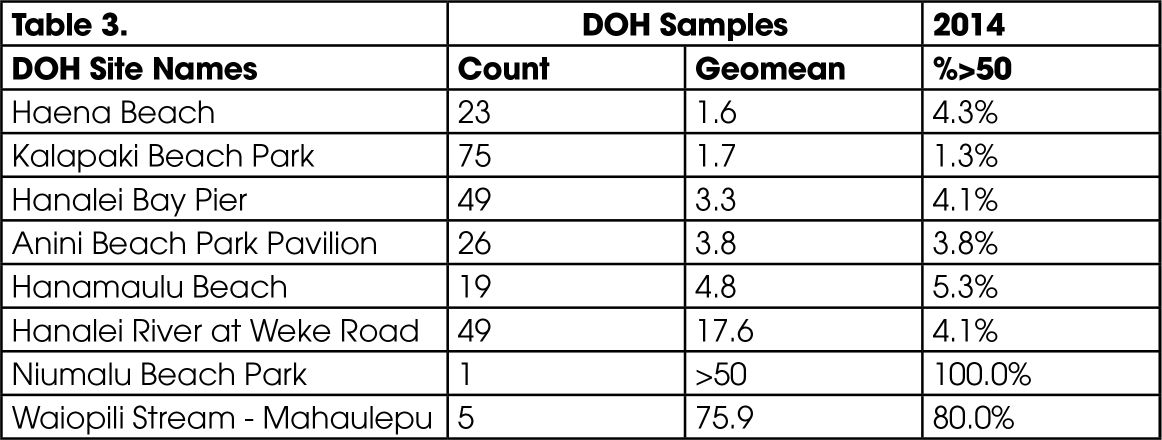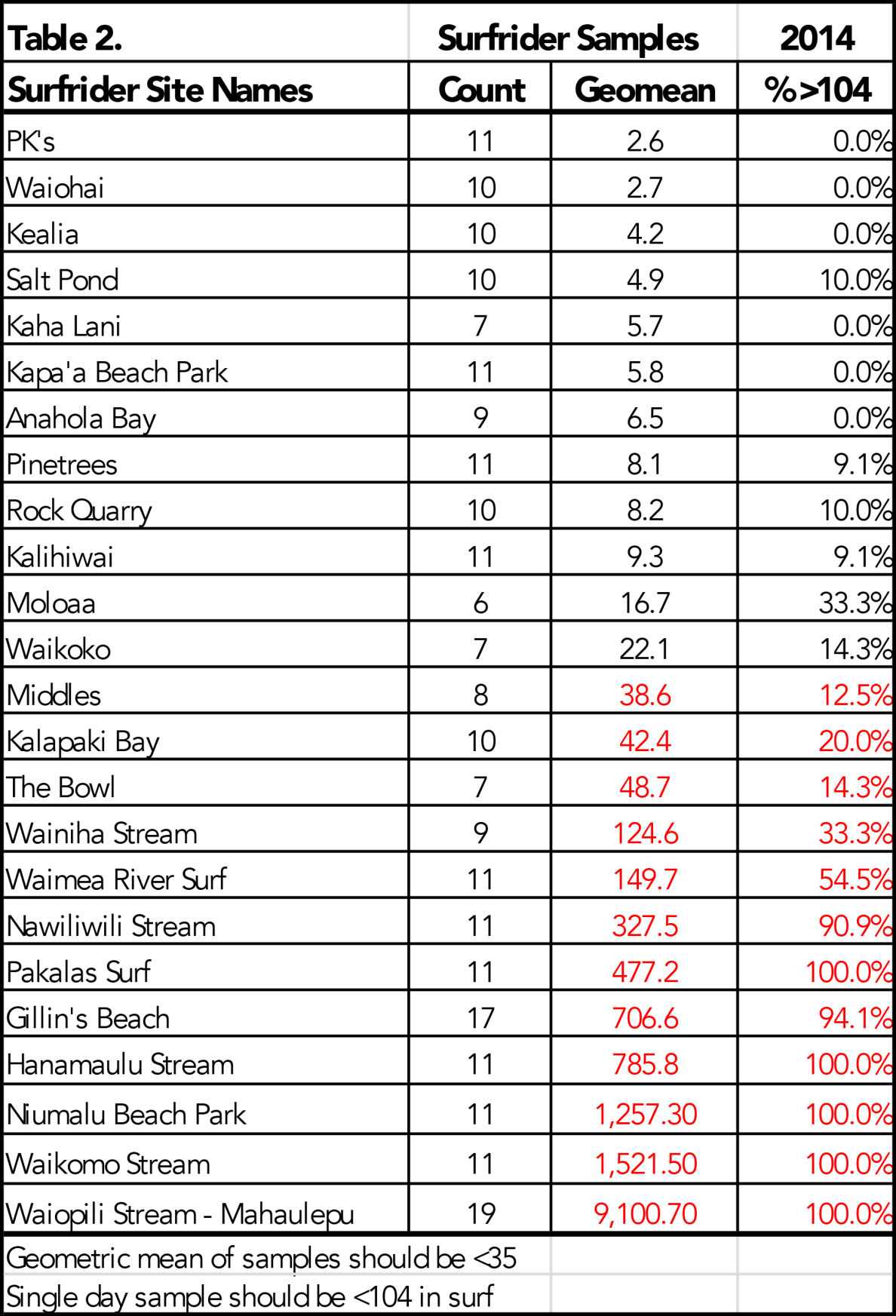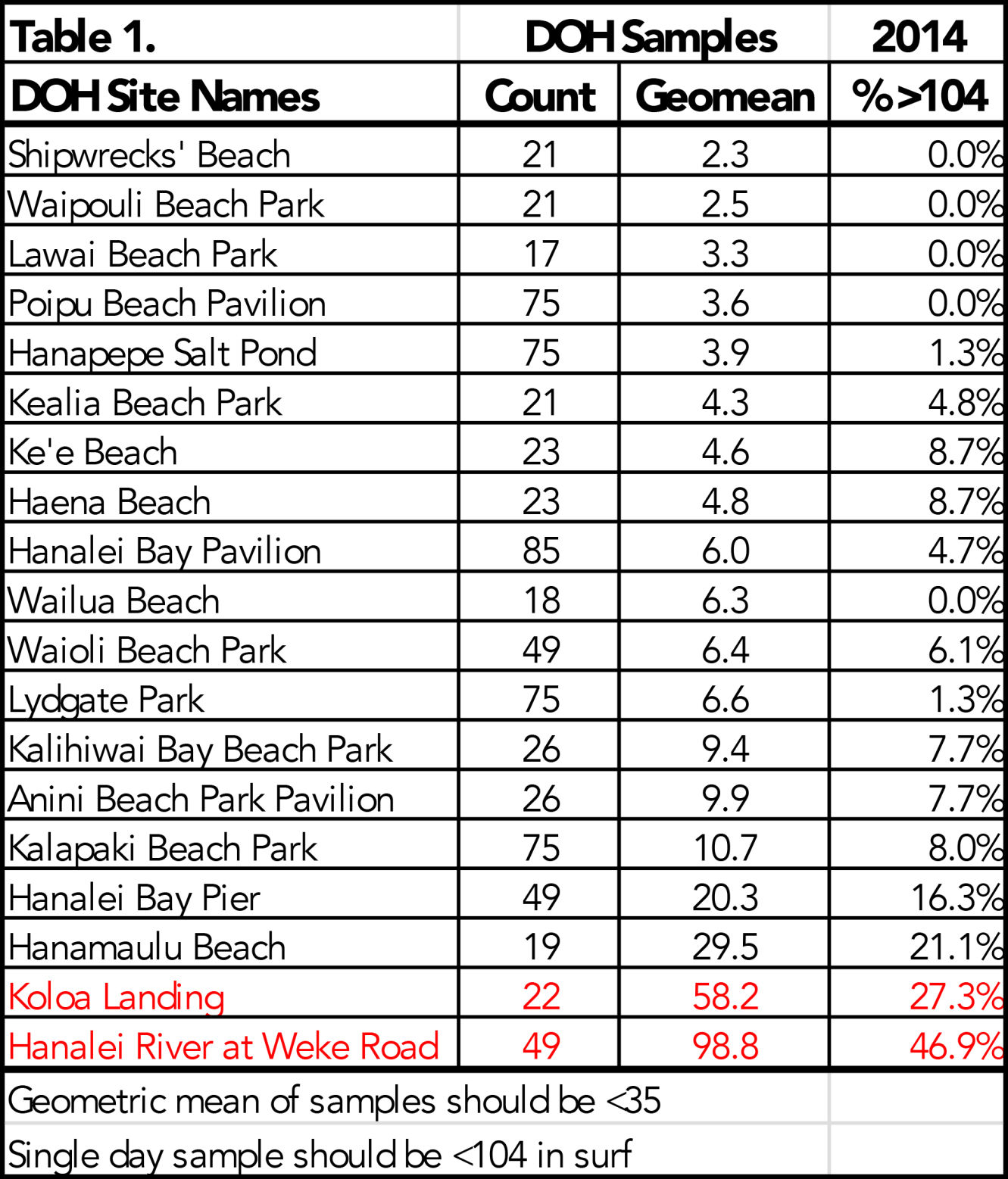In 2014, Kauai’s ocean beaches and surfbreaks were mostly clean, but some were definitely not. Our streams, with storm water runoff and ground water contamination, are often polluted. This is a summary of water quality for Kauai. Water quality monitoring
In 2014, Kauai’s ocean beaches and surfbreaks were mostly clean, but some were definitely not. Our streams, with storm water runoff and ground water contamination, are often polluted. This is a summary of water quality for Kauai.
Water quality monitoring data is collected weekly by the Hawaii Department of Health at ocean beaches around the island and monthly samples are collected by the Blue Water Task Force of the Surfrider Foundation — Kauai Chapter at surfbreaks and streams around the island. Most of the time the waters are clean. The exception is when heavy rains cause runoff from the land to turn the waters brown. The DOH then usually issues a “Brown Water Advisory” to stay out because the runoff can contain sewage and other pollutants.
During water quality monitoring, water samples are collected and the bacteria Enterococcus, an indicator of feces contamination, are cultured and counted in a 100 ml water sample. In a single sample the count must not exceed 104 bacteria per 100 ml. The percentage of samples that exceed the single sample maximum of 104 is listed as it indicates the percentage of time the area is considered polluted.
The geometric mean (average) of 5 samples should not be more than 35 bacteria per 100 ml. What is reported here are geometric means for the entire year 2014, indicating chronic levels of pollution for each area.
The DOH data for 2014 was collected by DOH staff (and Surfrider field assistants) in approximately mid-calf deep water on the beaches. A total of 28 different sites were sampled over the course of 2014; eight sites were collected on at least a weekly basis over the course of the full year, another 11 bi-weekly. DOH data for frequently collected sites is presented in Table 1.
If no bacteria were detected, the sample was given a value of 2.3 in order to do geometric mean statistics, e.g. Keoniloa Bay. The sites are listed from cleanest down to most often polluted.
Most are polluted less than 10 percent of the time and that is related to the number of rainy days sampled.
The Hanalei River estuary at Weke Road was polluted 46.9 percent of the time and Koloa Landing estuary was polluted 27.3 percent of the time. Bacteria were detected in every sample. Only those two sites had a geometric mean greater than 35 colonies per 100 ml. This suggests that pollution is mainly coming from river water.
Note that not all of the County Parks on Kauai are tested regularly (e.g. Anahola, Niumalu) and neither are popular places like Brennecke’s and Pakalas. The most recent values from the DOH are posted on their website at: http://emdweb.doh.hawaii.gov/CleanWaterBranch/WaterQualityData/default.aspx
•••
Carl Berg leads the Surfrider Foundation’s Blue Water Task Force





